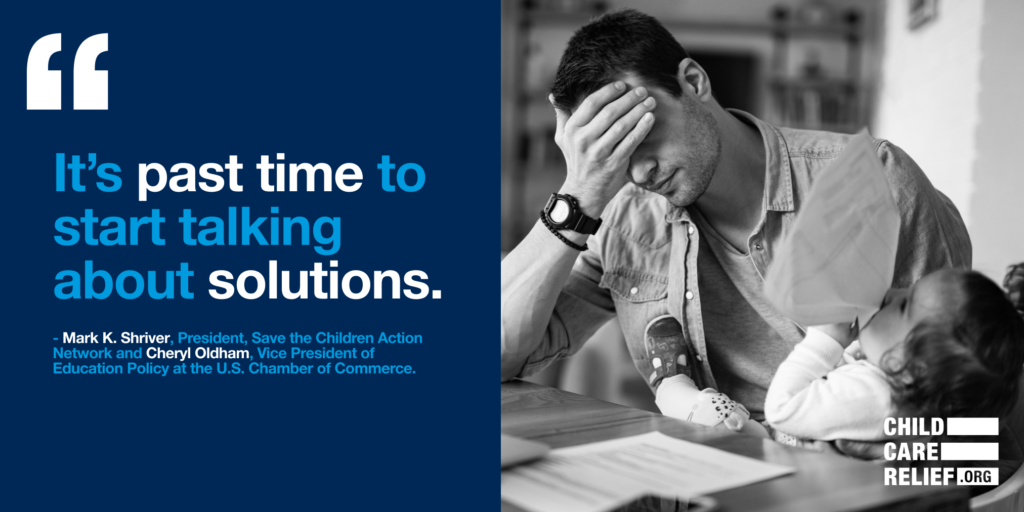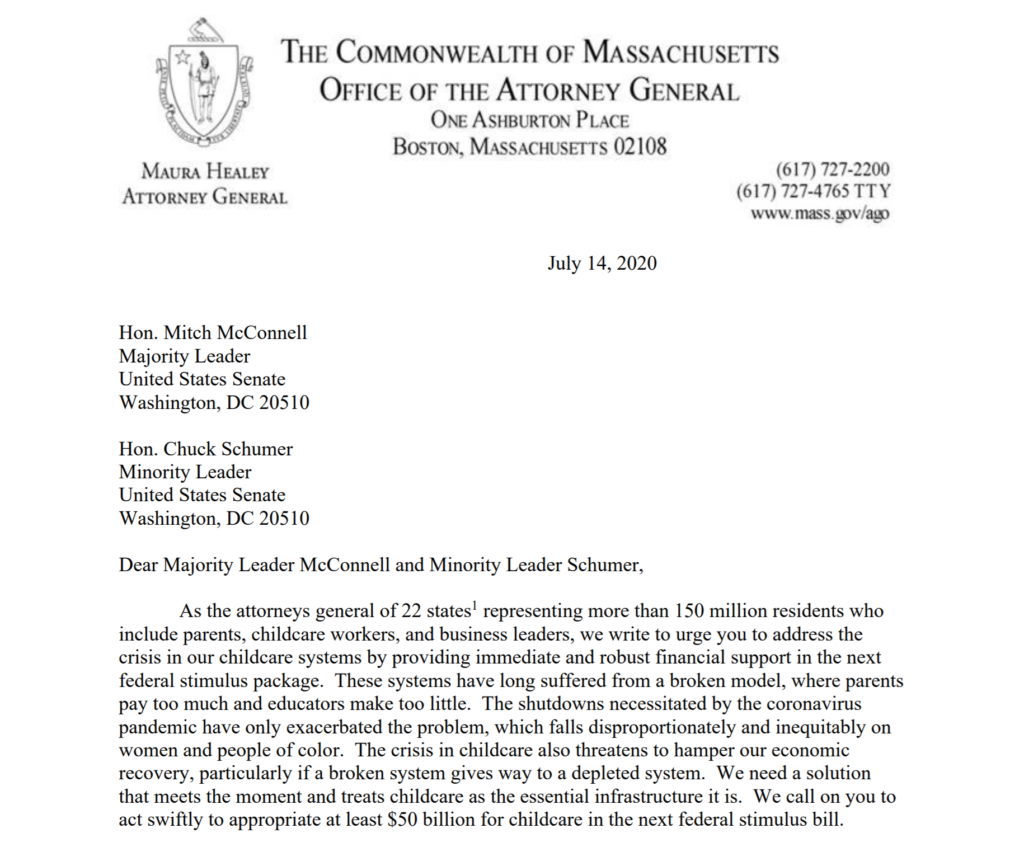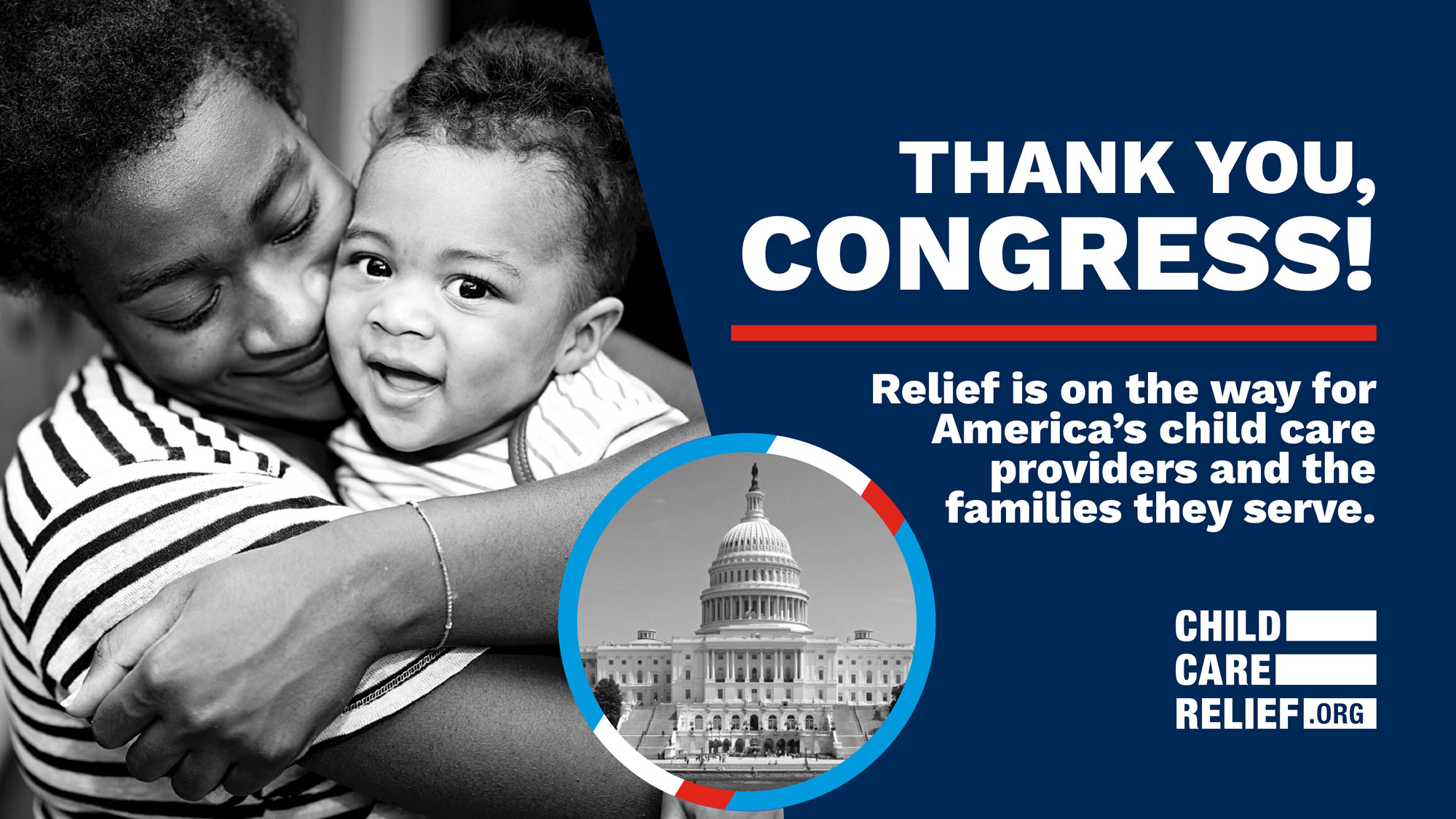
Child Care Relief on the Table in House and Senate Negotiations
America needs child care relief to keep the industry afloat during the nation’s economic recovery from the COVID-19 pandemic. The disastrous economic crisis has hit the child care industry especially hard, causing widespread layoffs and closures as a result of catastrophic drops in enrollment.
Recent legislation introduced by Republicans and Democrats show the bipartisan support in Congress for child care relief, but without an adequately funded child care stabilization fund, providers will continue to struggle to keep their doors open to meet the needs of children and families. Here’s a look at recent news coverage and analysis of the nation’s child care crisis.
THE LATEST: The Washington Post Editorial Board called on Congress to rescue the child care industry from the brink of collapse. Citing data from Child Care Relief campaign partners, the op-ed highlighted the dire state of the child care industry, which is largely tuition-funded and struggling with declining enrollment and mandatory closures. With half the industry at risk of permanent closure and parents returning to the workplace, the lack of child care will devastate both our economy and the personal finances of millions of Americans. Read the op-ed here.
CHILD CARE RELIEF PASSED IN THE HOUSE: In two bipartisan votes this week, the House of Representatives passed child care relief bills. The Child Care is Essential Act would create a $50 billion child care stabilization fund to provide grants to help providers pay for personnel, sanitation, training and other essential costs associated with reopening and running a child-care facility amid the pandemic. The Child Care for Economic Recovery Act would provide $10 billion for the Child Care Development Fund to distribute grants to construct, renovate or improve child care facilities, $7.1 billion increase of the Child Care Entitlement to States, and tax subsidies for working families, helping to bring quality child care within their reach to support ongoing employment. Read more analysis from CNBC’s Megan Leonhardt here.
CHILD CARE RELIEF IN THE SENATE: This week, Senate Majority Leader Mitch McConnell released the details of the next economic recovery package, which includes $15 billion in emergency funding for the child care industry. The proposed financial relief – $10 billion through a child care stabilization fund to states and $5 billion through the Child Care and Development Block Grant (CCDBG) program. Previously, the House passed the HEROES Act, which included $7 billion for child care, which was bolstered this week by passage of the Child Care is Essential Act. Even the most conservative estimates indicate a $26 billion investment to stabilize the child care industry would only cover half of the nation’s providers.
U.S. CHAMBER CALLS FOR CHILD CARE RELIEF: In a new letter to Congress, the U.S. Chamber of Congress is urging lawmakers to ensure the upcoming COVID-19 recovery package includes enough emergency stabilization funding to prevent the child care industry from collapsing. The business leaders, who have made child care a priority for years, wrote: “Thirteen million Americans rely on the childcare sector to care for and educate their young children while they work. Without this industry’s survival and ability to safely care for the children of working parents, every other American industry will struggle to return to work. The U.S. Chamber of Commerce appreciates the attention Congress is giving to this critical issue, but urges lawmakers to quickly find a bipartisan, bicameral path forward that is targeted and timely.” Read the full letter here.
IN THE STATES: A recent survey of Kentucky parents found that nearly 30 percent are struggling to find child care and they are stressed about sending their children back to care as they plan to return to work. A UC Berkeley study found that child care in Southern California is on the brink of collapse as they struggle to cover the rising costs related to COVID-19 safety requirements. In New York, child care providers are desperate for federal relief to prevent further closures and to fill vacant positions.
ICYMI: MASSIVE VOTER SUPPORT FOR CHILD CARE RELIEF:A poll released this week by First Five Years Fund and the Center for American Progress found broad support and demand for dedicated federal relief for child care providers. The support cuts across political affiliation and among key constituencies, with more than 80 percent in favor of a federal child care stabilization fund. Read the full results of this poll here.






